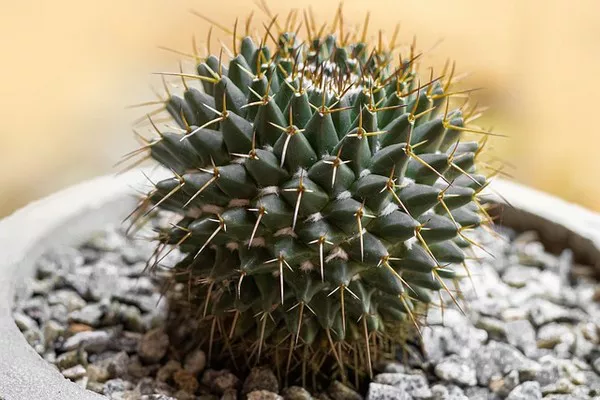Cacti, renowned for their resilience and unique adaptations to arid environments, captivate enthusiasts and botanists alike with their striking forms and textures. Beyond their distinctive spines and succulent structures, cacti conceal a fascinating secret – their exquisite and often overlooked flowers. In this article, we delve into the captivating world of cactus flowers, exploring their diversity, functions, and the sheer beauty that blooms in the arid landscapes.
Diversity of Cactus Flowers
Cactus flowers exhibit an astonishing array of shapes, sizes, and colors, defying the misconception that these resilient plants only produce dull and inconspicuous blooms. From the delicate, ephemeral flowers of the Epiphyllum cactus to the bold and vibrant blossoms of the Echinocereus, each species unveils a unique floral spectacle.
One of the most iconic cactus flowers is the Saguaro cactus blossom (Carnegiea gigantea), which adorns the Arizona desert with its creamy white petals and a sweet fragrance. In contrast, the Queen of the Night (Epiphyllum oxypetalum) surprises observers with large, fragrant white flowers that bloom exclusively at night, creating an enchanting nocturnal display.
The Anatomy of Cactus Flowers
Cactus flowers, like those of other plants, consist of various essential parts that contribute to their reproduction and overall functionality. The floral anatomy of cacti typically includes petals, sepals, stamens, and pistils. However, what distinguishes cactus flowers is their adaptation to the arid environment, which often influences their size, shape, and reproductive strategies.
Cacti have evolved to conserve water, and this is reflected in their flowers. The petals of cactus flowers are usually thick and waxy, helping to reduce water loss through transpiration. Additionally, many cacti produce small, tubular flowers, minimizing exposure to the arid air and potential desiccation.
Reproductive Strategies
Cactus flowers have evolved a range of reproductive strategies to thrive in harsh desert conditions. One remarkable adaptation is the synchronization of flowering with specific environmental cues, such as temperature, humidity, or the presence of pollinators. This ensures that the plant expends its energy on reproduction only when conditions are favorable.
Cacti employ various pollination mechanisms, relying on both biotic and abiotic agents. While some species depend on bees, butterflies, and hummingbirds for pollination, others have adapted to rely on the wind. The barrel cactus (Ferocactus) is an excellent example of a cactus species that relies on the wind to disperse its pollen, as its small, inconspicuous flowers lack the vibrant colors and fragrance typically associated with insect-pollinated blooms.
The Importance of Cactus Flowers
Beyond their aesthetic appeal, cactus flowers play a crucial role in the survival and biodiversity of arid ecosystems. As primary contributors to the reproductive success of cacti, these blooms ensure the continuation of these resilient plants in challenging environments. Moreover, the nectar produced by cactus flowers serves as a vital food source for a variety of pollinators, supporting a complex web of interactions within the desert ecosystem.
Conservation Concerns
Despite their ecological importance, cactus species, including those with magnificent flowers, face numerous threats in their natural habitats. Human activities, habitat destruction, and climate change pose significant challenges to the survival of cacti worldwide. Conservation efforts are essential to protect these unique plants and their diverse floral displays.
Additionally, the illegal trade of cacti, driven by the demand for exotic species and ornamental plants, further exacerbates the threat to their survival. Governments, botanical gardens, and conservation organizations must collaborate to enforce protective measures, promote sustainable practices, and raise awareness about the importance of preserving cactus biodiversity.
See Also How To Grow Strawberry Plants?
Cultivating Cactus Flowers
For enthusiasts who wish to experience the beauty of cactus flowers firsthand, cultivating these plants can be a rewarding endeavor. Cacti are well-suited to a variety of climates and can thrive both indoors and outdoors, making them accessible to a broad range of gardening enthusiasts.
Selecting the right cactus species for cultivation is crucial, as different species have varying care requirements. Providing well-draining soil, ample sunlight, and appropriate watering practices are essential for fostering healthy cactus growth and encouraging the development of vibrant flowers.
Conclusion
In conclusion, the flowers of cacti are a hidden treasure within the world of these resilient desert plants. Beyond their survival strategies and adaptations to arid environments, cactus flowers stand as symbols of beauty and resilience. Understanding the diversity of cactus flowers, their unique anatomy, and their ecological significance enhances our appreciation for these remarkable plants. As we navigate the challenges of conservation and sustainable cultivation, we can ensure the continued existence of these extraordinary blooms in the arid landscapes they call home.


